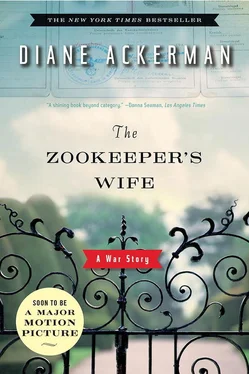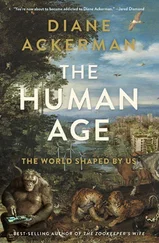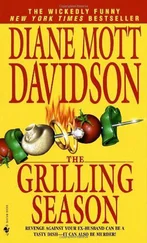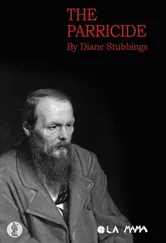Humans domesticated wild horses about six thousand years ago, and immediately began refining them: killing the defiant ones for food while breeding the most genial, to produce a horse that submits more easily to saddle and plow. In the process, we revised the horse’s nature, compelling it to shed its zesty, ungovernable, evasive wildness. The aloof, free-range Przywalski horses retained that fury, and Heck planned to weave their combative spirit into the new tarpan’s genetic mix. History credits Colonel Nikolai Przywalski, a Russian explorer of Polish descent, with “discovering” the wild Asiatic horse in 1879, hence its name, though, of course, the horse was well known to the Mongolians, who had already named it tahki. Heck factored the tahki’s stamina, temper, and looks into his formula, but he craved even older creatures—the horses that dominated the prehistoric world.
What a powerful ideal—that sexy, high-strung horse, pawing the ground in defiance, its hooves all declaratives. Heinz Heck wrote after the war that he and his brother had begun the back-breeding project out of curiosity, [17] Though Polish scientist Tadeusz Vetulani had tried the same back-breeding process years before without success, Heck stole Vetulani’s research and, ultimately, thirty animals, which he sent to Germany, later installing them in Rominten and then Białowieża.
but also from “the thought that if man cannot be halted in his mad destruction of himself and other creatures, it is at least a consolation if some of those kinds of animals he has already exterminated can be brought back to life again.” But why have tarpans to ride if there were nothing worthy to hunt?
Lutz Heck soon began ministering to a handful of European bison, including those he stole from the Warsaw Zoo, hoping that they might prosper in Białowieża’s spirit-house of trees, just as their ancestors had. Heck envisioned forest bison once again galloping along the trails, as sunlight speared through branches of hundred-foot oaks, in a woodland throbbing with wolves, lynx, wild boar, and other game, soon to be joined, he hoped, by herds of ancient horses.
Heck also sought a legendary bull, the aurochs, once the largest land animal in Europe, known for its savagery and vigor. When Ice Age glaciers melted, about twelve thousand years ago, most giant mammals vanished, but in the cold forests of northern Europe, some aurochsen survived, and all modern cattle have descended from those few—not that aurochsen would have been easy to domesticate eight thousand years ago. Because the aurochs went extinct in the 1600s, recent in evolutionary terms, Heck felt sure he could reconstruct it, and in so doing save it, too, from “racial degeneration.” He dreamt that, alongside the swastika, the bull might become synonymous with Nazism. Some drawings of the era showed the aurochs and a swastika joined in an emblem of ideological suavity combined with ferocious strength.
Many ancient cultures worshipped the aurochs bull, especially in Egypt, Cyprus, Sardinia, and Crete (whose trans-species ruler supposedly descended from a sacred bull). Zeus often assumed the shape of a bull in Greek myth, the better to ravage alluring mortals and produce offspring with magical gifts; when he abducted Europa, it was in the guise of an aurochs, a great black bull with short beard and giant forward-pointing horns (like those on long-horned cattle, or on the helmets of heroes in the Nibelungen). What better totemic animal for the Third Reich? Heck’s passion for the project was shared by top Nazi officials, making it clear that Heck’s work was not just about the re-creation of extinct species. After Hitler came to power, the biological aims of the Nazi movement spawned many projects to establish racial purity, which justified acts of sterilization, euthanasia, and mass murder. [18] Much as Hitler publicly championed a fit, vigorous Aryan race, Goebbels had a clubfoot, Göring was obese and addicted to morphine, and Hitler himself seems to have been suffering from third-stage syphilis by the end of the war, addiction to uppers and downers, and quite possibly Parkinson’s. Hitler’s doctor, Theo Morell, a renowned specialist in syphilis, accompanied him everywhere, syringe and gold-foil-wrapped vitamins at the ready. Rare film footage shows Hitler using his steady right hand to shake hands with a line of boys, while his left, hidden behind his back, displays Parkinson’s distinctive tremor. What were his so-called vitamins? According to criminologist Wolf Kemper ( Nazis on Speed: Drogen im 3. Reich [2002]), the Wehrmacht commissioned an array of drugs that would increase focus, stamina, and risk-taking, while reducing pain, hunger, and fatigue. Between April and July of 1940, troops received over 35 million 3-milligram doses of the addictive and mood-altering amphetamines Pervitin and Isophan. In a letter dated May 20, 1940, twenty-two-year-old Heinrich Böll, then stationed in occupied Poland, despite his “unconquerable (and still unconquered) aversion to the Nazis,” wrote his mother in Cologne to rush him extra doses of Pervitin, which German civilians were buying over the counter for their own use. (Leonard L. Heston and Renate Heston, The Medical Casebook of Adolf Hitler [London: William Kimber, 1979], pp. 127–29.)
One of the Third Reich’s key scientists, Heck’s colleague and good friend Eugene Fischer, founded the “Institute of Anthropology, Genetics, and Eugenics,” which favored Josef Mengele and other equally sadistic SS doctors who used concentration camp inmates as guinea pigs. [19] Josef Mengele grew up in a family of Bavarian industrialists, and declared his religion as Catholic on official forms (instead of “believer in God,” as Nazism preferred). Genetic abnormalities fascinated him, and “Dr. Auschwitz,” as he came to be known, had an ample pool of children on whom to do experiments which the Frankfurt court would later denounce as “hideous crimes” performed “willfully and with bloodlust,” which often included vivisection or murder. “He was brutal but in a gentlemanly, depraved way,” one prisoner reported, and others described him as “very playful,” “a Rudolph Valentino type,” always smelling of eau de cologne. (Quoted in Robert Jay Lifton, The Nazi Doctors: Medical Killing and the Psychology of Genocide [New York: Basic Books, 1986], p. 343.) “In selecting for death or in killing people himself, the essence of Mengele was flamboyant detachment—one might say disinterestedness—and efficiency,” Lifton concludes (p. 347). As new prisoners arrived, guards marched up and down the lines calling out “ Zwillinge, zwillinge! ” as they hunted twins for Mengele to tamper with in gruesome ways. Changing eye color became his favorite line of research, and on one wall of his office, he displayed an array of surgically removed eyes pinned up like a collection of moths.
Fascinated by violence and the red-blooded manly spirit—naturally brave, daring, fierce, hardy, sane, lusty, strong-willed—Eugene Fischer believed that mutations in human beings were as destructive as those in domestic animals, and that interbreeding was wilting the human race in the same way that it had already denatured certain “beautiful, good, and heroic” wild animals, losing the potent original in the genetic clutter. The roots of Nazism fed on a lively occultism that spawned the Thule Society, the Germanenorden, the Völkisch movement, Pan-Germanism, and other nationalist cults that believed in a race of Aryan god-men and the urgency of exterminating all inferiors. They exalted superhuman ancestors, whose ancient gnostic rule had brought the Aryans wisdom, power, and prosperity in a prehistoric age until it was supplanted by an alien and hostile culture (namely, Jews, Catholics, and Freemasons); these ancestors were supposed to have encoded their salvation-bringing knowledge in cryptic forms (e.g., runes, myths, traditions), which could be deciphered ultimately only by their spiritual heirs.
Читать дальше












